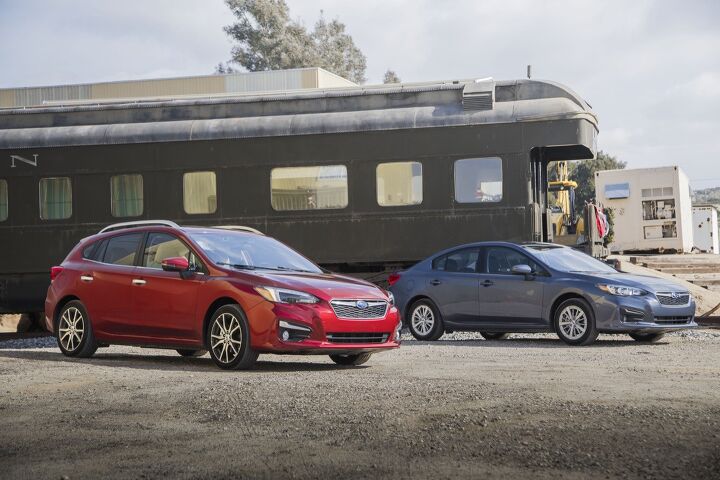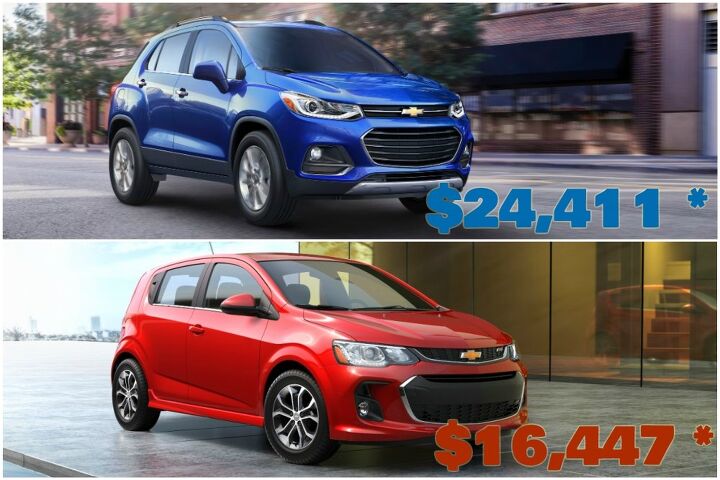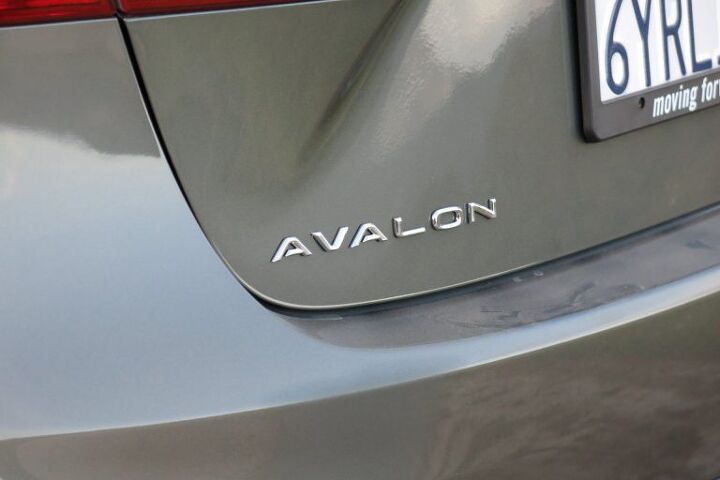#CarSales
Dealership Throughput Expected to Slip for Third Year in a Row
While sales numbers are a decent metric for assessing volume, they don’t give an accurate representation of what’s actually happening at the dealership. Instead, the figure represents the number of models an automaker was able to move from the factory. Theoretically, a manufacturer could load up a bunch of trucks at the end of the month and count them as “sold” to bolster volume — whether or not real people actually bought them.
Dealer throughput is better for assessing the current consumer climate. But we’re sure you won’t be surprised to hear that it’s cold and only expected to get colder. U.S. dealership throughput, the average number of new-vehicle sales per dealership, is expected to slip 2.9 percent this year. That equates to a mean of 920 vehicles in 2018, down from 947 in 2017.
So Far, 2018 Auto Sales Are Better Than Expected; Thank Dangerously Heavy Incentives
With the automotive market continuing to cool off, the industry went into 2018 with a less than optimistic view. Volume for the year is anticipated to continue its downward trend but, incredibly, January appears to be on par with the same period last year — if not slightly better.
Did the analysts get it wrong? Probably not. Incentive spending was up across the board and that’ll likely be the case throughout the rest of the year. The real trick will be for automakers to keep their lineups appealing without going wild with discounts. That’s because the annual forecast still calls for lower volume than in 2017.
Depressed About Flat U.S. Car Sales and the Death of the Sedan? Will 90 Million Units Globally Cheer You Up?
While it’s definitely not the same doom and gloom vibe felt around the domestic auto industry as it was financially circling the drain in 2008, headlines in the new year seem to forecast storm clouds on the horizon.
After nearly a decade of sales growth, the American market for passenger cars and light trucks flattened out in 2017. Actually, sales didn’t just flatten in the U.S., they dropped 1.75 percent for the year. Not only has the overall U.S. market shrunk, we’re seeing predictions of the death of an entire segment of that market, the sedan — a segment that has pretty much defined the American automotive world for a century. It’s one thing for an iconoclastic website like TTAC to be talking about a sedan deathwatch, but when that prediction is on the front page of the Detroit News, with reports that Ford may very well stop building sedans in America and that Buick sedan sales have been cut in half over the past year, people will take notice.
I’m not here to depress you, though. Despite the gloomy cast to things, in reality the automotive industry as a whole is doing very well.
U.S. Auto Sales Brand-by-Brand Results - November 2017 YTD
With a single month remaining in 2017, automakers are ramping up sales efforts in the hopes of finishing the year on a high note. At this time of year, most stores deploy all the tools in their arsenal, from magical incentives to generous trade-in values, in a bid to compete with consumer dollars generally spent elsewhere during December.
The preceding month was solid but not stunning, leading some to openly wonder if this’ll be the first year since the Bankruptcy Days that total industry sales will be a few units less than the previous 12 months.
Detroit's Passenger Car Sales Are Falling Way Faster Than the Overall U.S. Auto Industry's
Across the U.S. auto industry, there are a number of auto brands that are actually selling more passenger cars in 2017 than in 2016: Jaguar, Lincoln, Infiniti, Subaru, Volkswagen.
Some specific models, many with all-wheel-drive availability like the Audi A5, Subaru Impreza, and Volkswagen Golf, are enjoying far greater sales success this year than last.
But you know the story. Generally speaking, Americans are buying far fewer cars now than they used to. From more than 50 percent just five years ago, passenger car market share is down to 37 percent. Nowhere is this more obvious than at traditional domestic manufacturers, the Detroit Three.
These 16 Cars Are Bucking America's Anti-Car Trend in 2017
Through the first eight months of 2017, consumers across America have acquired 12 percent fewer new passenger cars than during the first eight months of 2016.
That’s a drop of 565,000 sales, a rate of decline that stands in stark contrast to the U.S. auto industry’s 4-percent year-over-year light truck improvement. Cars now account for just 37 percent of all auto sales, down from more than 50 percent as recently as 2012. But it’s not all doom and gloom. Some auto brands are selling more cars this year than last, and a wide variety of cars are accelerating their sales pace. Subaru, for example, has already sold 17,981 more Imprezas in 2017 than in the same period of 2016.
So we’ve compiled a list of every passenger car that’s making meaningful headway in America’s anti-car market — the cars that are selling more and more often even as many of their competitors suffer under the weight of a pro-F150, pro-RAV4, pro-Escalade ESV wave.
The list is not very long.
Millennials Are Human After All: Moving to the Suburbs, Buying Large SUVs
It turns out millennials aren’t the freakish alien shape-shifters the media has portrayed them as for the last decade. While still less prone to breeding, poorer than their parents, more educated, and inclined towards city living, they’re human after all.
“Where’s the proof?” you ask?
Recent surveys indicate millennials are, in fact, moving to the suburbs and buying SUVs. But that didn’t stop analysts from being dicks about it. “As more people move out of their parents’ basement — and there’s still quite a few living there — we expect to see continued healthy demand for homes,” explained Svenja Gudell, chief economist for Zillow. “Millennials delayed home ownership, just like they delayed getting married and having kids, but now they’re making very similar decisions to their parents.”
More importantly, home ownership means compulsory sport utility shopping. Large SUV sales have increased 11 percent in the first half of 2017, according to estimates from Ford Motor Company. Meanwhile, midsize family haulers increased by 9 percent and small SUV sales went up by 4 percent. Ford’s market research indicates this could just be the tip of the iceberg.
Eight Consecutive Months of Volkswagen Sales Improvement Ends in July 2017 - Crossover Volume Still Very Low
After steady declines even prior to the diesel emissions scandal of nearly two years ago, Volkswagen of America took another serious hit in 2016 — the best year on record for the auto industry. Compared with 2012, Volkswagen volume sank by 85,000 sales last year.
But by the end of 2016, Volkswagen’s U.S. sales volume was beginning to rise again. True, that rise was in comparison with a true low — Volkswagen sales in the final one-sixth of 2016 were up 22 percent year-over-year but were 17-percent lower than in the same period of 2012 — but Volkswagen was bouncing back.
The bounce back continued through the first half of 2017, with Volkswagen sales through June up 8 percent despite the market’s 2-percent downturn.
Perhaps July was just a blip on the radar. But Volkswagen’s eight-month streak of improvement screeched to a halt last month as the U.S. auto industry reported its most significant losses of the year, and as Volkswagen’s new SUV lineup continues to dip its toes in American waters.
One Consequence of America's Increasing Fondness for Crossovers? Automakers Laughing All the Way to the Bank
Perhaps we oversimplify it. Perhaps we don’t.
Take one Honda Fit or Chevrolet Sonic or Mazda 2, alter the exterior body panels, clad the wheel arches or bumpers in a modest amount of black plastic, periodically route power to the rear wheels without any fancy AWD systems, elevate the roofline, and increase ride height just a bit. Use a typical small car engine, the same transmissions, and many of the same interior bits.
The result: HR-V, Trax, CX-3. Call it a crossover. Dare even to call it an SUV.
And then, according to Kelley Blue Book, charge customers $7,700 more for the privilege.
June 2017 U.S. Auto Sales Likely Slid for a Sixth Consecutive Month As Incentives and Transaction Prices Rise
Automakers likely sold fewer than 1.5 million new vehicles in the United States in June 2017, a modest decrease of around 2 percent compared with June 2016.
While auto sales remain high by historic standards — 1.48 million sales would still make June 2017 more than 15-percent better than the 1.33 million June average from 2011-2015 — June nevertheless represents the persistence of a negative trend.
After 2016 ended with a December boom to close out the highest-volume year on record, auto sales in the United States declined on a year-over-year basis in each of 2017’s first five months. A 2-percent drop in June, worth roughly 30,000 lost sales, will run the streak of decreases to a full half-year.
The American auto industry’s decline comes as automakers continue to incentivize heavily and, fortunately for manufacturers, consumers grow ever more willing to pay higher prices.
There Are Nine Months Left In 2017, But We Already Know the Honda Civic Will Be Canada's Best-Selling Car This Year
Canadian passenger car sales are falling, not unpredictably, as SUVs and crossovers continue to earn an increasingly large chunk of market share.
And yet at the top of the passenger car leaderboard, Canada’s two best-selling cars are selling at a record pace, with no small amount of help from new hatchback body styles.
Bucking the Canadian, North American, and global anti-car trend most distinctly is the Honda Civic, Canada’s best-selling car in each of the last 19 years.
Indeed, so strong have Civic sales been through the first-quarter of 2017, we’re ready to make a projection. Make it a confirmation. We’ll say it with certainty. Honda Canada’s Civic streak will reach a full two decades, twenty years, as the Civic becomes Canada’s best-selling car in 2017.
The Civic’s lead is already insurmountable.
QOTD: What Gearhead Folly Has Befallen You?
Gearheads like ourselves are particularly susceptible to the siren song a car, especially if our own Id deems it to be a ZOMG good deal. This is the deep and perilous financial rabbit hole into which most of us fall.
All of this was on prominent display this weekend at the annual Barrett Jackson classic car auction this past weekend in the Arizona desert. I stood across from a guy who, wild-eyed and armed with a bidder’s number, was bound and determined to win the 1964 Austin-Healey in front of us on the block. He was successful, and I wish him well, Lucas electrics and all.
I wager most of us reading TTAC have a story of getting waaaay too wrapped up in the auctioneer’s patter or throwing caution to the wind on a particularly sketchy Craigslist ad … including our esteemed Managing Ed.
No Fixed Abode: Give The Customer What He (Doesn't Know He) Wants
“Well, I bought that car last night.” Craig has this unnerving habit of simply appearing at my cubicle while I’m trying to do something productive, like texting people or reading random articles from the Last Psychiatrist archive on my phone. He’s a soft-spoken fellow, entering late middle age the same way that I am but not showing nearly as much evidence of blunt trauma, well-compensated in his engineering job but modest in appearance and disinclined to spend money.
Regarding my life and temperament, I like to follow the example of Robert Bly in quoting Cesar Vallejo: “Well, / On the day that I was born / God was sick / gravely.” I suspect that on the day that Craig was born, by contrast, God was in perfect health and settling down with the newest issue of Consumer Reports. About a month ago, Craig started seriously thinking about replacing his 150,000-mile Honda CR-V. It’s been a faithful companion for a freeway commute that takes about an hour in each direction, but even the most prosaic of Hondas eventually reaches a point where the cost of maintenance starts to become a factor. Not in money, necessarily, but in time.
Knowing that I dabble a bit in things automotive, Craig had asked what I thought about the new CR-V. This was a subject on which I was glad to speak, because I absolutely despise the “cute-utes” and will take every opportunity to rooster-block the purchase of one.
Why New U.S. Model Years Come Out Ridiculously Early
Have you ever wondered why the model year and actual calendar year of production vehicles rarely coincide? Do you ever notice American-made cars have a tendency to come out almost comically early? Have you ever wondered why?
The answer is as uniquely American as the question itself, revolving around agriculture, consumer culture, and television.
When is the Best Time to Buy a Used Car? Right Now
If you fancy yourself an automotive bargain hunter, the best time to score a deal on a used car is right around the corner. So, stop clicking around on Autotrader for five minutes and equip yourself with some useful knowledge to better your odds of snagging some savings.





























Recent Comments